Dahlias are stunning flowering plants native to Mexico and Central America, known for their vibrant blooms and diverse array of shapes, sizes, and colors. With over 42 species and thousands of cultivars, dahlias offer endless possibilities for gardeners and flower enthusiasts. From the humble single-flowered varieties to the elaborate dinnerplate types, dahlias add a touch of elegance and beauty to any garden or floral arrangement.
Why Grow Dahlias?
Beyond their sheer beauty, dahlias serve multiple purposes in gardens and landscapes. These versatile plants not only enhance outdoor spaces with their stunning blooms but also attract beneficial insects like bees, butterflies, and hummingbirds. Dahlias are also prized for their longevity as cut flowers, making them popular choices for bouquets, arrangements, and centerpieces. Whether you’re a seasoned gardener or a novice enthusiast, growing dahlias can bring joy and color to your outdoor spaces.
Selecting the Perfect Dahlia Varieties
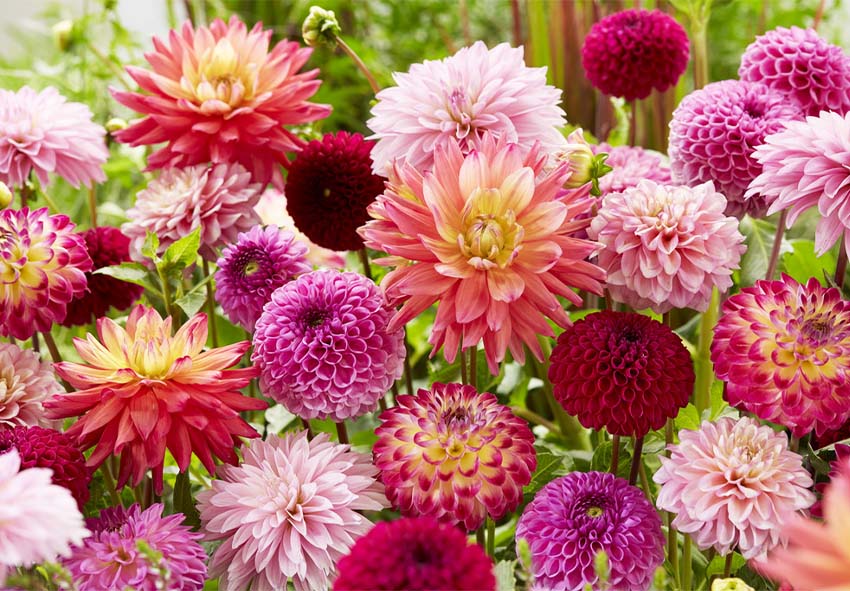
Explore a selection of popular dahlia varieties, each offering its own charm and beauty. Dinnerplate dahlias, known for their oversized blooms, make dramatic focal points in gardens and floral arrangements. Cactus dahlias, with their spiky petals, add texture and interest to bouquets. Pompon dahlias, resembling miniature pom-poms, are perfect for adding delicate touches to arrangements. Other noteworthy varieties include ball, collarette, and waterlily dahlias, each with its unique appeal. Our blog is a perfect place to find all the information you need.
Understanding Dahlia Classification
Dahlias are classified into various types, forms, and classes based on their characteristics and growth habits. Understanding these classifications can help you choose the right varieties for your garden. For example, dahlia types include single-flowered, decorative, cactus, and pompon, each with its unique petal arrangement and bloom shape. Consider factors such as bloom size, plant height, and color preferences when selecting dahlias for your garden.
Popular Dahlia Varieties
Discover the diverse world of dahlia varieties! Below is a concise table highlighting some of the most popular Netherlands dahlia cultivars, each offering its unique charm and characteristics. Whether you’re planning a vibrant garden display or seeking the perfect blooms for a floral arrangement, this table provides a helpful guide to selecting the ideal dahlia varieties for your needs:
| Variety Name | Botanical Name | Usage | Color | Flowering Period | Particularities |
| Dinnerplate Dahlias | Dahlia spp. | Garden focal points, cut flowers | Various shades | Summer to fall | Exceptionally large blooms, up to 12 inches in diameter, requires sturdy support due to weight, available in a wide range of colors |
| Cactus Dahlias | Dahlia spp. | Bouquets, garden borders | Various shades | Summer to fall | Spiky, tubular petals that curve backward, adds texture and interest to floral arrangements and gardens |
| Pompon Dahlias | Dahlia spp. | Boutonnieres, corsages | Various shades | Summer to fall | Small, ball-shaped blooms with tightly packed petals, prolific bloomers on compact plants, ideal for delicate floral accents |
| Ball Dahlias | Dahlia spp. | Garden beds, containers | Various shades | Summer to fall | Fully double flowers with rounded petals, compact growth habit, long-lasting blooms suitable for both garden beds and containers |
| Waterlily Dahlias | Dahlia spp. | Cut flowers, garden borders | Various shades | Summer to fall | Double blooms with flattened petals arranged in layers, resembles waterlilies, excellent cut flowers for serene and elegant floral arrangements |
Planting and Growing Dahlias

Embarking on the journey of planting and growing dahlias promises a season filled with vibrant blooms and lush foliage. Before diving into the planting process, it’s essential to prepare your garden beds, select suitable locations, and ensure optimal soil conditions. With careful attention to timing and techniques, along with diligent care throughout the growing season, you’ll be rewarded with healthy dahlias bursting with color and beauty. This section will provide a step-by-step guide to planting dahlias, along with essential tips for nurturing them to their full potential.
Preparing Your Garden for Dahlias
In this section, we’ll explore the essential steps to ensure your garden is primed and ready to welcome these beloved blooms. From soil preparation to providing structural support and optimizing growing conditions, proper preparation sets the stage for a successful dahlia-growing season. Join us as we delve into the key considerations for creating an ideal environment that promotes the health, vigor, and beauty of your dahlia plants. Here’s a list detailing the steps for preparing your garden for dahlias:
- Selecting a Suitable Location: Choose a sunny spot in your garden that receives at least 6 to 8 hours of direct sunlight per day. Avoid areas with strong winds or excessive shade, as dahlias thrive in full sun.
- Assessing Soil Drainage: Check the drainage of the soil in your chosen location. Dahlias prefer well-draining soil to prevent waterlogging, which can lead to root rot. Amend heavy or clay soils with organic matter, such as compost or aged manure, to improve drainage.
- Clearing the Area: Remove any weeds, debris, or existing vegetation from the planting area to create a clean and open space for your dahlia plants. This helps minimize competition for nutrients and reduces the risk of pests and diseases.
- Soil Preparation: Prepare the soil by loosening it to a depth of 12 to 18 inches (30 to 45 cm) using a garden fork or tiller. Incorporate organic matter, such as compost or well-rotted manure, into the soil to improve its structure, fertility, and water retention.
- Testing Soil pH: Conduct a soil pH test to determine the acidity or alkalinity of your soil. Dahlias prefer slightly acidic to neutral soil with a pH range of 6.5 to 7.0. Adjust the soil pH if necessary using lime to raise pH or sulfur to lower pH.
- Mulching: Apply a layer of organic mulch, such as straw, shredded bark, or compost, around the base of dahlia plants to conserve moisture, suppress weeds, and regulate soil temperature. Leave a gap around the stems to prevent rotting.
- Watering: Ensure the planting area is adequately watered before planting dahlias. Water the soil thoroughly to moisten it to a depth of 6 to 8 inches (15 to 20 cm), providing a moist and hospitable environment for dahlia roots to establish.
By following these steps, you can effectively prepare your garden for dahlias and create an optimal growing environment for these beautiful and versatile flowers.
Planting Dahlias: Step-by-Step Guide
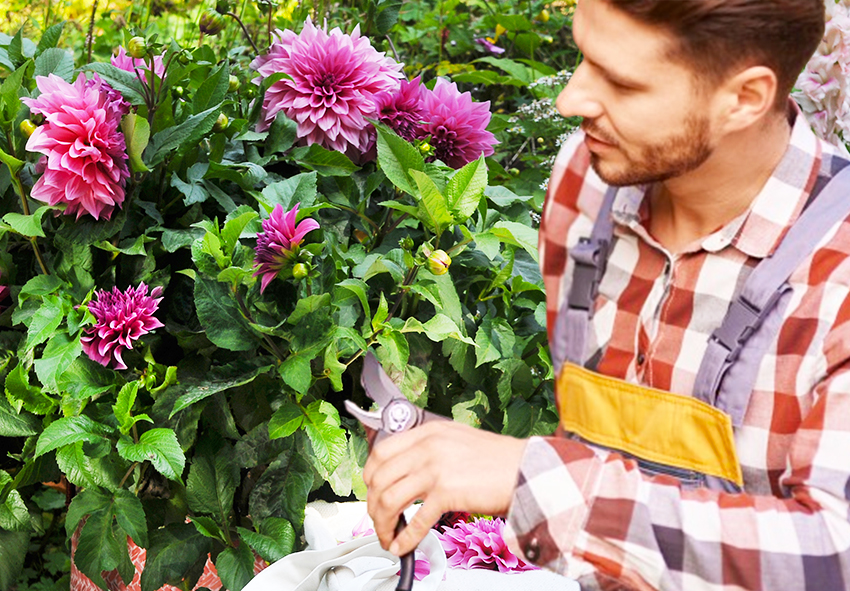
Planting dahlias is indeed a straightforward process, yet it demands careful timing and precise technique to ensure optimal growth and blooming. Especially in cooler climates, it’s crucial to wait until after the last frost date to plant dahlia tubers directly into the ground, safeguarding them from potential frost damage. When planting, dig a hole slightly larger than the tuber itself, ensuring ample space for its roots to spread.
Position the tuber horizontally within the hole, with its eyes facing upward to encourage vigorous sprouting. Cover the tuber gently with soil, leaving the top exposed to the air, and water thoroughly to settle the soil and provide essential hydration to the newly planted tuber. To promote healthy growth and airflow, space the tubers 18-24 inches apart, allowing ample room for each plant to flourish and thrive. With these careful considerations and practices, you’ll lay the foundation for a robust and flourishing dahlia garden, brimming with vibrant blooms and natural beauty.
Growing Dahlias in Pots
Growing dahlias in pots offers a versatile and space-saving option for cultivating these beautiful blooms, especially for those with limited garden space or who want to add a pop of color to patios, balconies, or decks. When selecting pots for dahlias, choose containers that are at least 12 inches (30 cm) in diameter and have drainage holes to ensure proper drainage and prevent waterlogging, which can lead to root rot.
Fill the pots with a well-draining potting mix, enriched with organic matter such as compost or aged manure, to provide the nutrients dahlias need to thrive. Plant dahlia tubers in the pots, positioning them horizontally with the eyes facing upward, and cover with soil, leaving the top exposed. Place the pots in a sunny location where they will receive at least 6 to 8 hours of direct sunlight per day. Water the dahlias regularly, keeping the soil evenly moist but not waterlogged.
Fertilize the plants every few weeks with a balanced fertilizer to promote healthy growth and abundant blooms. With proper care and attention, dahlias grown in pots can reward you with a stunning display of color and beauty throughout the growing season.
Dahlia Care Throughout the Growing Season
Once planted, dahlias require regular care to thrive and bloom abundantly. Water deeply and consistently, ensuring the soil remains evenly moist but not waterlogged. Fertilize dahlias every 4-6 weeks with a balanced fertilizer to promote healthy growth and blooms. As dahlias grow, provide support for tall varieties with stakes or cages, and pinch back young plants to encourage bushier growth. Regular deadheading of spent blooms can also prolong the blooming season.
Growing Conditions for Dahlias
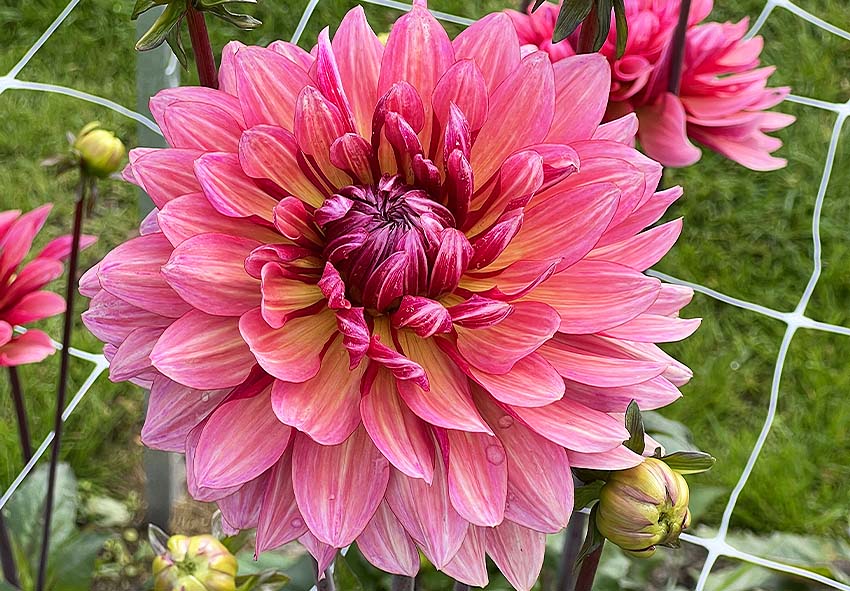
In this section, we delve into the optimal growing conditions necessary to nurture these vibrant blooms to their fullest potential. From climate requirements to soil preferences and sunlight needs, understanding the ideal environment for dahlias lays the groundwork for a successful and bountiful growing season. Whether you’re a seasoned gardener or a novice enthusiast, mastering the growing conditions for dahlias is key to cultivating stunning displays of color and beauty in your garden. Let’s explore the elements that contribute to the thriving growth of these beloved flowers.
Climate Requirements
Dahlias thrive in temperate climates with warm summers and mild winters. They prefer growing in regions where temperatures range between 60°F to 70°F (15°C to 21°C) during the growing season. While dahlias can tolerate some frost, they are sensitive to freezing temperatures, so it’s essential to plant them after the threat of frost has passed. In areas with colder winters, dahlias can be grown as annuals or lifted and stored indoors during the winter months.
Soil Preferences
Well-draining soil is crucial for dahlia cultivation, as they are prone to rot in waterlogged conditions. Ideally, plant dahlias in loamy, sandy, or clay soils with good drainage. Before planting, amend heavy soils with organic matter such as compost or aged manure to improve soil structure and fertility. A soil pH between 6.5 to 7.0 is optimal for dahlias, ensuring proper nutrient uptake and healthy growth.
Sunlight and Shade Needs
Dahlias thrive in full sun, requiring at least 6 to 8 hours of direct sunlight per day to produce abundant blooms. Plant dahlias in a location that receives ample sunlight, preferably in a south or west-facing area of the garden. While dahlias can tolerate some shade, they may produce fewer blooms and exhibit leggy growth in shady conditions. Adequate sunlight promotes vigorous growth, sturdy stems, and vibrant flower colors in dahlias.
Dealing with Common Dahlia Pests and Diseases
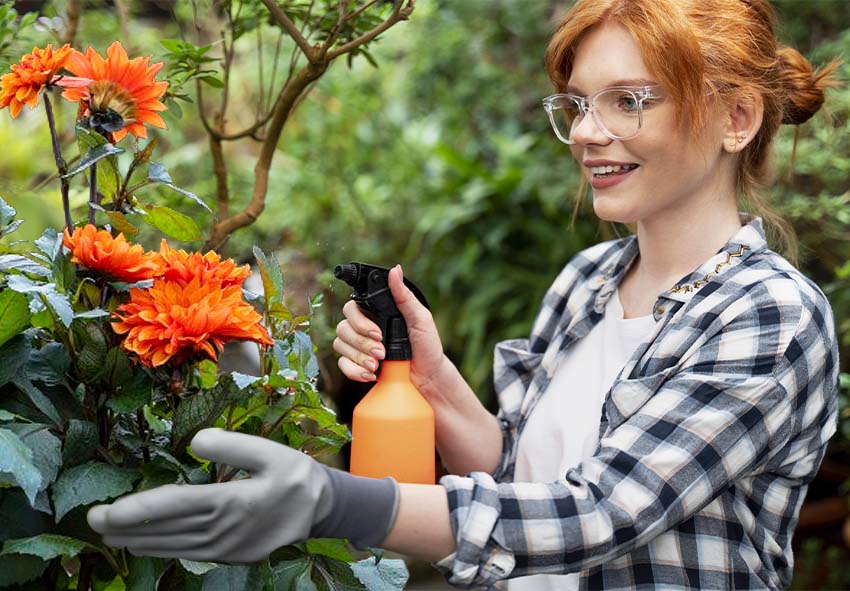
Navigating the challenges of pests and diseases is an essential aspect of dahlia cultivation. In this section, we’ll explore the common pests and diseases that can affect dahlia plants and provide valuable insights into identifying, preventing, and managing these issues. From pesky aphids to insidious fungal infections, understanding the threats to your dahlias is the first step towards ensuring their health and vitality. By learning effective strategies for dealing with pests and diseases, you’ll be better equipped to protect your precious dahlia blooms and enjoy a thriving garden all season long.
Identifying Dahlia Pests
Keep an eye out for common pests that may affect dahlias, including aphids, thrips, and spider mites. These pests can cause damage to foliage and flowers if left unchecked. Inspect plants regularly for signs of infestation, such as distorted leaves, stippling, or webbing, and take appropriate measures to control populations.
- Aphids (Aphidoidea):
These small, soft-bodied insects gather on new growth, undersides of leaves, and flower buds. They come in varying colors, from green to black, and feed by sucking sap from plant tissues. Aphid infestations can cause leaves to curl, distort, and yellow. Additionally, the honeydew they excrete attracts ants and fosters the growth of sooty mold.
- Thrips (Thysanoptera):
Thrips are tiny, slender insects that feed on plant sap by puncturing leaves, buds, and flowers. Often too small to see without magnification, they may appear as tiny specks or dark spots on foliage. Thrips feeding results in stippling, silvering, and distortion of leaves, as well as browning of flower petals. Dark fecal matter (thrips frass) on leaves and flowers indicates thrips infestation.
- Spider Mites (Tetranychidae):
These minuscule arachnids feed on plant sap by piercing leaf cells with their mouthparts. Typically found on the underside of leaves, they produce fine webbing. Spider mite feeding causes stippling, yellowing, and bronzing of leaves, often leading to leaf drop in severe infestations. Their presence and webbing can be detected using a magnifying glass.
- Slugs and Snails (Gastropoda):
Soft-bodied mollusks, slugs, and snails feed on plant foliage, leaving behind irregularly shaped holes and ragged edges. Active at night or during high humidity, they hide in moist, shady areas during the day. Slugs and snails leave slime trails on plant surfaces, indicating their presence. Control methods include physical barriers and baits.
- Earwigs (Dermaptera):
Nocturnal insects with pincer-like cerci, earwigs feed on plant foliage, flowers, and pollen, causing irregular feeding damage. They often hide in tight spaces during the day, such as leaf axils, flower buds, and mulch layers. Traps filled with rolled-up newspaper or straw can help capture and remove earwigs from the garden.
Preventing and Managing Dahlia Diseases
Dahlias are susceptible to various diseases, including powdery mildew, botrytis, and leaf spot. To prevent these diseases, practice good garden hygiene by removing debris and fallen leaves from around plants. Provide adequate air circulation by spacing plants properly and avoiding overcrowding. If disease symptoms appear, treat affected plants promptly with fungicides labeled for dahlia diseases, following the manufacturer’s instructions.
Harvesting Dahlia Flowers
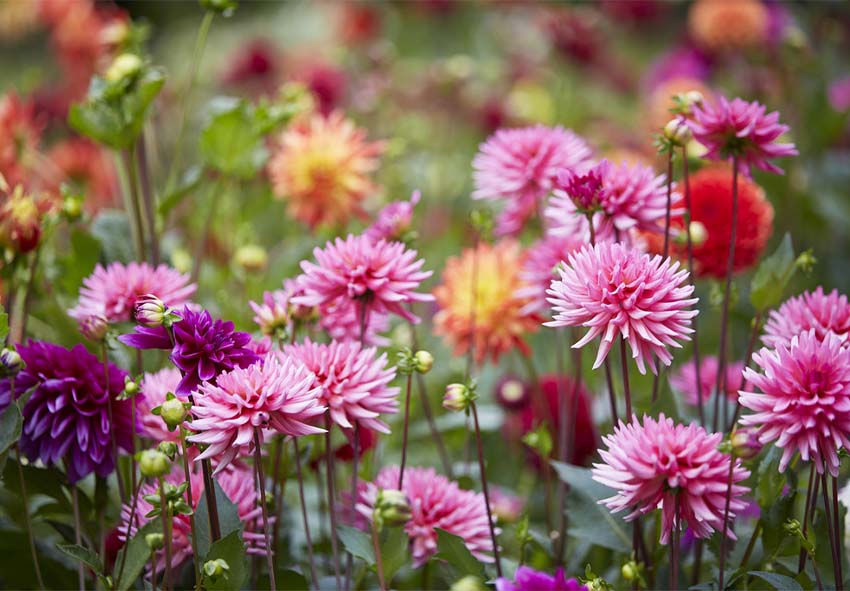
To enjoy dahlias as cut flowers, harvest blooms at the peak of perfection. Use sharp, clean scissors or pruners to cut stems at a 45-degree angle, just above a leaf node. Place cut dahlias in a bucket of water immediately to prevent wilting. Remove any foliage that will be submerged in water to prolong the vase life of the blooms.
Showcasing Dahlia Blooms
Get creative with showcasing your dahlia blooms:
- Showcase your dahlia blooms in arrangements, bouquets, and centerpieces, highlighting their vibrant colors, intricate shapes, and captivating textures to create visually striking displays that will be the focal point of any room or event.
- Mix and match different colors, shapes, and sizes of dahlia blooms to create stunning floral compositions that evoke a sense of natural beauty and elegance, combining contrasting hues and complementary forms for a harmonious effect that delights the senses.
- Use dahlia blooms as thoughtful gifts for special occasions like birthdays, weddings, or anniversaries, conveying warmth and affection with their symbolic meanings of love, gratitude, and admiration, while also adding a touch of natural beauty to the recipient’s home or office.
- Consider presenting them in unique containers or vases to add a personal touch to your floral gifts, enhancing their beauty and charm with creative arrangements that reflect the recipient’s personality and style, whether it’s a rustic basket, a vintage-inspired vase, or a sleek modern container, the possibilities are endless for creating memorable and meaningful floral gifts.
Overwintering Dahlias
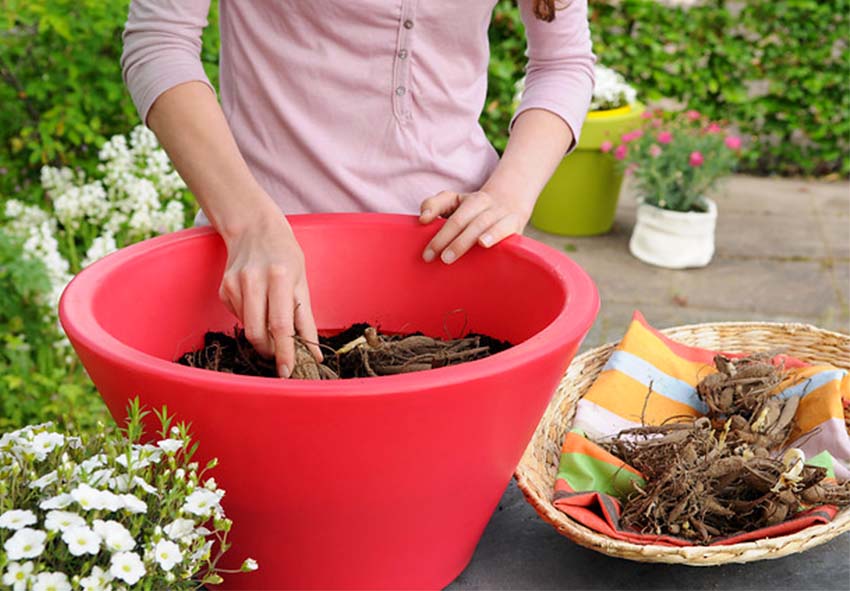
As the growing season comes to an end, prepare your dutch dahlias for winter dormancy by providing frost protection and digging up tubers for storage. Before the first frost, mulch around dahlia plants with a thick layer of organic material to insulate the soil and protect tubers from freezing temperatures. Once foliage is killed back by frost, carefully dig up tubers, taking care not to damage them.
Replanting Dahlias in Spring
In spring, when the danger of frost has passed, replant your dutch plants in the garden for another season of growth and bloom. Inspect tubers for signs of damage or rot, and discard any that appear unhealthy. Divide large clumps of tubers into smaller sections, ensuring each division has at least one viable eye. Plant tubers following the same guidelines as in the previous season, and provide ongoing care to promote vigorous growth and blooming.
Conclusion
In conclusion, growing dahlias offers a rewarding experience for gardeners of all skill levels. From selecting the perfect varieties to caring for plants throughout the growing season, this guide has equipped you with the knowledge and tips needed to cultivate beautiful dahlias from Holland in your garden. By following these guidelines and techniques, you can enjoy the beauty and charm of dahlias year after year, creating stunning displays and sharing the joy of gardening with others.
Frequently Asked Questions (FAQs) about Dahlias
1. When is the best time to plant dahlias?
In most regions, it’s best to plant dahlia tubers after the threat of frost has passed, typically in late spring or early summer. This ensures that the soil has warmed up sufficiently for optimal tuber growth and minimizes the risk of frost damage to tender young plants.
2. How should I prepare my garden for planting dahlias?
Prepare your garden by selecting a sunny location with well-draining soil. Clear the area of weeds and debris, loosen the soil to a depth of 12 to 18 inches, and amend it with organic matter to improve drainage and fertility. Space dahlia tubers 18 to 24 inches apart to allow for proper growth and airflow.
3. How can I order Holland dahlias from your online store?
Ordering Holland dahlias from our online store Dutch-bulbs.com is simple and convenient. Visit our website and browse our selection of dahlia varieties, including those sourced from Holland for their exceptional quality and beauty. Once your order is confirmed, our team will carefully pack and ship your Holland dahlia bulbs directly to your doorstep, ensuring they arrive fresh and ready for planting.
4. Can dahlias be grown in pots or containers?
Yes, dahlias can be grown in pots or containers, providing a versatile option for gardeners with limited space. Choose containers that are at least 12 inches in diameter with drainage holes, fill them with well-draining potting mix, and plant dahlia tubers horizontally with the eyes facing upward. Place the pots in a sunny location and water regularly to ensure healthy growth.
5. How do I overwinter dahlias for the next growing season?
In regions where winters are cold, dahlias need to be lifted and stored indoors to protect the tubers from frost damage. After the first frost, carefully dig up the tubers, remove excess soil, and allow them to dry in a well-ventilated area. Once dry, store the tubers in a cool, dark, and dry location until the following spring, when they can be replanted for another season of growth and blooming.
Published: 23.04.2024
